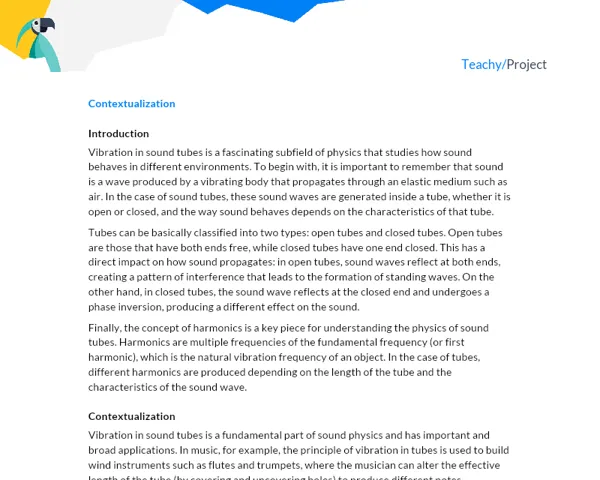Contextualization
Introduction
Electricity is a fundamental part of our daily lives. Without it, many of the comforts and conveniences we enjoy every day would not exist. Understanding electricity and, more specifically, the concept of resistance and resistivity, is crucial not only for scientists and engineers, but for everyone.
Resistance is the property that materials have to oppose the passage of electric current. The higher the resistance, the harder it is for the current to pass. Resistance is generally measured in ohms and is represented by the Greek symbol Omega (Ω).
Resistivity, on the other hand, is a specific property of each material that determines its resistance to the flow of current, taking into account the dimensions of the material. It is measured in ohm-meters (Ω.m) and is represented by the Greek letter rho (ρ).
Contextualization
Resistance and resistivity play a vital role in the operation of many of the devices we use daily. In fact, many of the artifacts used by us, such as light bulbs, heaters, and ovens, work thanks to the resistance of the materials. Similarly, resistivity is a crucial property to be considered when designing and manufacturing electronic equipment, as a high resistivity value can cause excessive heat dissipation, which can damage the components.
Furthermore, the principles of resistance and resistivity are essential for understanding more complex concepts, such as Ohm's law, electrical circuits, and electrical power, all of which are fundamental to Physics and Electrical Engineering.
Practical Activity
Activity Title: Building and Testing Resistors
Project Objective:
The objective of this project is for each group of students, composed of 3 to 5 members, to build and test resistors made of different types of materials to determine their resistance and resistivity.
Detailed Project Description:
In this activity, students must select three different materials that can be used to create resistors. Various materials can be used, such as copper wires, aluminum, iron, among others. Students will also have to design and build a simple circuit to test the resistance of these created resistors. They must also measure the resistance of the resistors using a multimeter and record the results. Subsequently, using the correct measurements and calculations, they must determine the resistivity of each material used.
This project should be carried out over a month. Each student should invest between five to ten hours in its completion.
Required Materials:
- Three types of wires of different materials, with the same thickness and length (e.g., copper, aluminum, iron);
- Multimeter or ohmmeter;
- Power source (battery or battery);
- Tape measure or ruler;
- Notebook or sheets of paper for notes;
- Calculator;
- Internet/computer for research and writing the final document.
Detailed Step-by-Step for Activity Execution:
-
Material Selection: Students must research and select three different types of wires, considering their availability, cost, and safety in handling.
-
Resistors Preparation: Students will prepare the resistors by cutting pieces of the chosen wires, all with the same length and diameter.
-
Circuit Assembly: Students must assemble a simple circuit by connecting the power source (battery or battery) to the constructed resistor (chosen wire). Repeat this step for each type of wire.
-
Resistance Measurement: Using the multimeter or ohmmeter, students must measure the resistance of each resistor.
-
Data Recording: Students must record all relevant information in their notes, such as the type of material, the length and diameter of the wire, and the measured resistance.
-
Resistivity Calculation: Using the formula
ρ = R*(A/L), where R is the measured resistance, A is the cross-sectional area of the wire, and L is the length of the wire, students must calculate the resistivity of each material. -
Writing the Final Document: Finally, students must write a report, following the suggested format (Introduction, Development, Conclusions, and Bibliography) that demonstrates the complete process.
For the final document, students must:
-
Introduction: Contextualize the importance of resistance and resistivity in real life, the project's objective, and the procedure followed.
-
Development: Explain the theory about resistance and resistivity, detail the activity process, including the choice of materials, procedure followed, difficulties encountered, and results obtained.
-
Conclusion: Students must summarize the main points of their experience, the main learnings, and conclusions about the Resistance and Resistivity Project.
-
Bibliography: Students must indicate the sources of information used in the project.
The final reports must be submitted on the scheduled day to be evaluated for understanding of theoretical concepts, effectiveness of the experiment conducted, and quality of the written report, including clarity, organization, data presentation, and conclusions.


